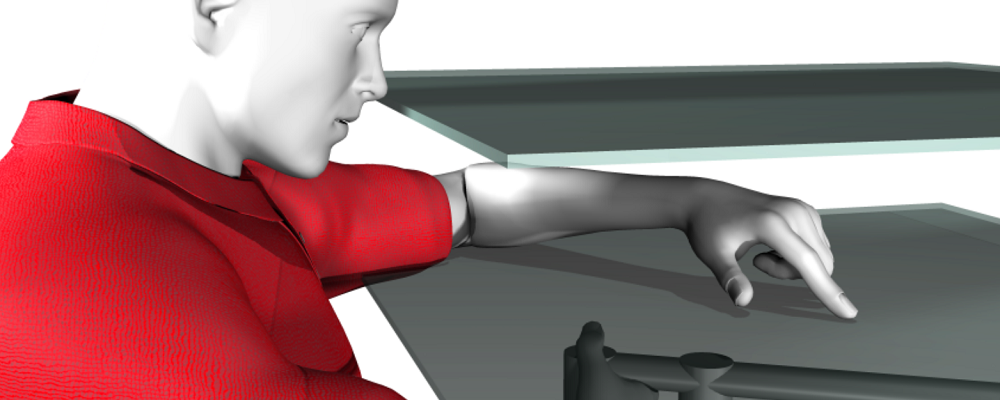
The Neural Processes in Visually Driven, Explicit Motor Adaptation.
"It wasn’t me: External source attribution effects on hand-position estimates."
People constantly adapt movements to dynamic conditions within both the environment and our own body, while taking the source of errors into account. In Denise Henriques’ lab, we investigate adaptation of reaching movements by altering visual feedback of the hand, where the motion of a cursor is rotated relative to the hidden hand.
Adaptation to this type of perturbation includes updating hand-position estimates, which include information from two sources: afferent-based feedback, such as the felt limb position or proprioception, and efferent-based predicted sensory consequences, computed by internal forward models based on the outgoing motor command. Our recent work found that updates in hand-position estimates still persisted, despite explicit awareness of the external nature of the perturbation. However, such explicit knowledge should make the brain attribute the source of errors externally. That is, if it is clear that the perturbation is due to the cursor being manipulated externally and not due to one’s own motor system, then hand-position estimates should not be updated.
For my Master’s project, we trained participants with a 30-degree rotated hand-cursor, and we manipulated the error attribution with four different visual manipulations:
- “non-instructed” control group received neither instructions nor different visual stimuli
- “instructed” group received a counter-strategy for the rotation
- “cursor-jump” group saw the cursor misalignment mid-reach on every trial
- “hand view” group saw their actual hand and misaligned cursor on every trial.
We predicted that the absence of ambiguity about the visual misalignment will dampen both afferent and efferent-based changes in hand-position estimates. We found that shifts in predicted sensory consequences were dampened for the hand view group, but proprioceptive recalibration persisted in all groups. Although groups differed with error attribution to the cursor, we speculate that proprioception is recalibrated based on the cursor, not the actual hand.
By Raphael Gastrock, trainee in VISTA Core member Denise Henriques' lab.

